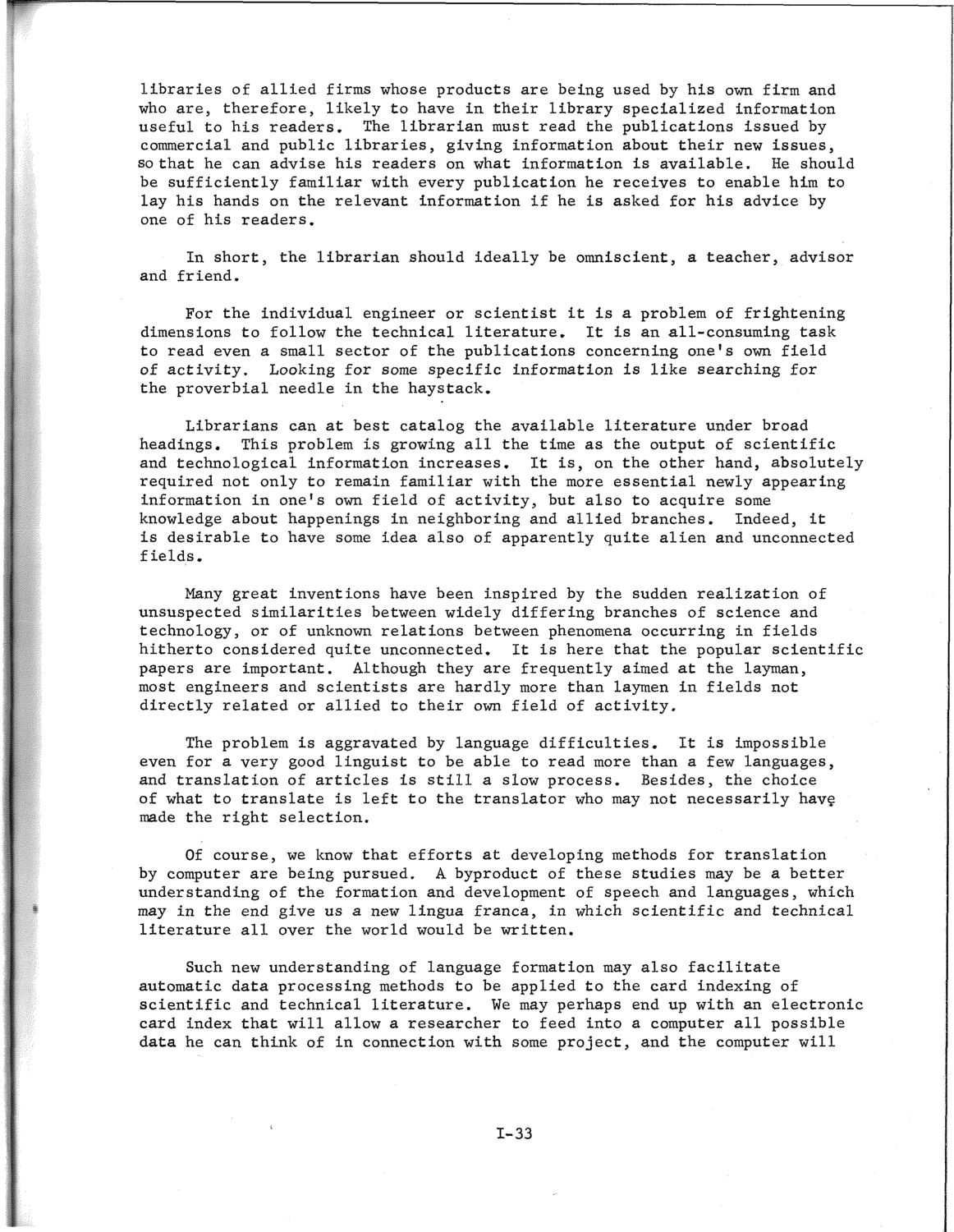| |
| |
Caption: SWE - Proceedings of the First International Conference of Women Engineers and Scientists
This is a reduced-resolution page image for fast online browsing.

EXTRACTED TEXT FROM PAGE:
libraries of allied firms whose products are being used by his own firm and who are, therefore, likely to have in their library specialized information useful to his readers. The librarian must read the publications issued by commercial and public libraries, giving information about their new issues, so that he can advise his readers on what information is available. He should be sufficiently familiar with every publication he receives to enable him to lay his hands on the relevant information if he is asked for his advice by one of his readers. In short, the librarian should ideally be omniscient, a teacher, advisor and friend. For the individual engineer or scientist it is a problem of frightening dimensions to follow the technical literature. It is an all-consuming task to read even a small sector of the publications concerning one's own field of activity. Looking for some specific information is like searching for the proverbial needle in the haystack. Librarians can at best catalog the available literature under broad headings. This problem is growing all the time as the output of scientific and technological information increases. It is, on the other hand, absolutely required not only to remain familiar with the more essential newly appearing information in one's own field of activity, but also to acquire some knowledge about happenings in neighboring and allied branches. Indeed, it is desirable to have some idea also of apparently quite alien and unconnected fields. Many great inventions have been inspired by the sudden realization of unsuspected similarities between widely differing branches of science and technology, or of unknown relations between phenomena occurring in fields hitherto considered quite unconnected. It is here that the popular scientific papers are important. Although they are frequently aimed at the layman, most engineers and scientists are hardly more than laymen in fields not directly related or allied to their own field of activity. The problem is aggravated by language difficulties. It is Impossible even for a very good linguist to be able to read more than a few languages, and translation of articles is still a slow process. Besides, the choice of what to translate is left to the translator who may not necessarily have made the right selection. Of course, we know that efforts at developing methods for translation by computer are being pursued. A byproduct of these studies may be a better understanding of the formation and development of speech and languages, which may in the end give us a new lingua franca, in which scientific and technical literature all over the world would be written. Such new understanding of language formation may also facilitate automatic data processing methods to be applied to the card indexing of scientific and technical literature. We may perhaps end up with an electronic card index that will allow a researcher to feed into a computer all possible data he can think of in connection with some project, and the computer will 1-33
| |